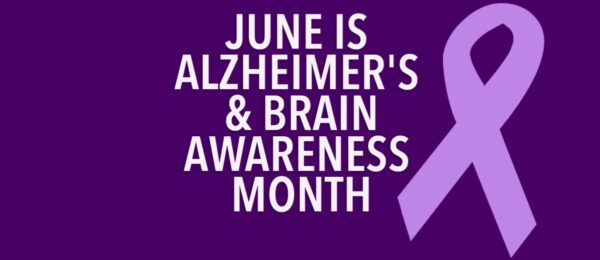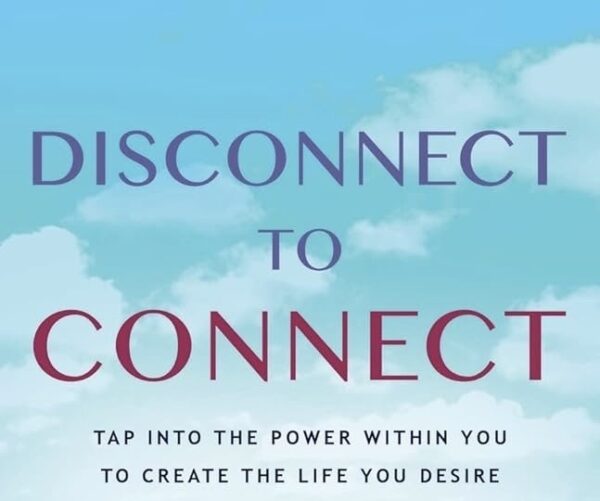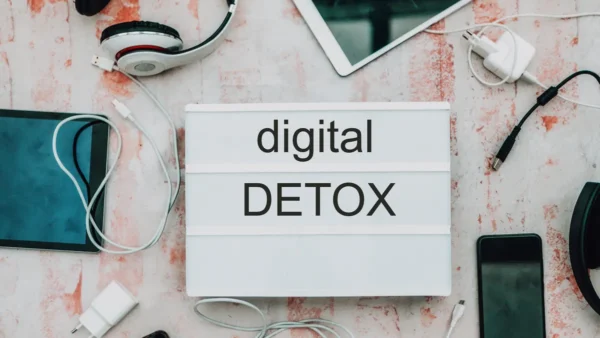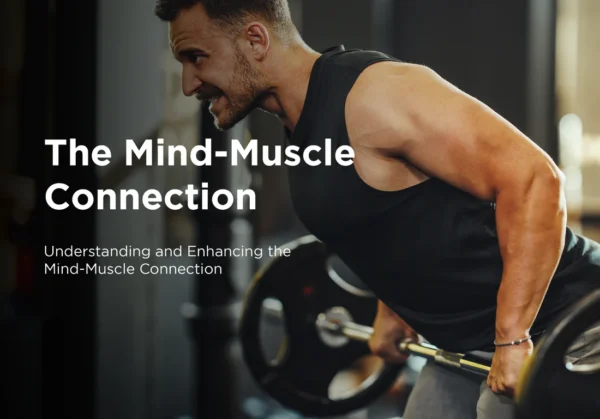
June, a month dedicated to unleashing the full potential of our brainpower and igniting awareness for Alzheimer’s disease. As we embark on this journey of enlightenment and advocacy, let’s explore how we can channel our collective energy to raise awareness, support research, and empower those affected by Alzheimer’s. Join us as we delve into actionable strategies to make a difference this Alzheimer’s Awareness Month.
Raising Awareness:
Awareness is the first step towards meaningful change. Spread the word about Alzheimer’s disease and its impact on individuals, families, and communities. Share informative resources, personal stories, and advocacy initiatives on social media platforms, in your local community, and among your networks. By raising awareness, we can shine a light on Alzheimer’s and inspire others to join the fight.
Supporting Research:
Research is the cornerstone of progress in the fight against Alzheimer’s. Get involved in fundraising events, volunteer opportunities, and advocacy campaigns to support organizations dedicated to Alzheimer’s research. Your contributions can fund groundbreaking studies, clinical trials, and innovative treatments that bring us closer to a world without Alzheimer’s.
Empowering Those Affected:
Alzheimer’s affects millions of individuals and their loved ones worldwide. Show your support by offering compassion, understanding, and practical assistance to those living with Alzheimer’s and their caregivers. Volunteer at local memory care facilities, participate in support groups, or simply lend a listening ear to someone in need. Your kindness and empathy can make a world of difference in the lives of those affected by Alzheimer’s.
Taking Action for Change:
Action speaks louder than words. Advocate for policy changes, increased funding for Alzheimer’s research, and improved access to care and support services. Write letters to lawmakers, participate in advocacy events, and engage with advocacy organizations to amplify your voice and drive meaningful change at local, national, and global levels.
As we ignite awareness for Alzheimer’s this June, let’s unleash the full power of our brainpower to make a difference. By raising awareness, supporting research, empowering those affected, and taking action for change, we can create a future where Alzheimer’s no longer robs individuals of their memories and dignity. Together, let’s stand united in the fight against Alzheimer’s and ignite a spark of hope for generations to come.
Thank you for taking this journey with us. Hopefully this has made you more aware of the necessity of good health. If you can make an impact throughout Alzheimer’s and Brain Awareness Month and Maximize Your Human Potential!

We are in the third week battling against Alzheimer’s and cognitive decline takes center stage. In this month dedicated to raising awareness, let’s explore how we can harness the power of mind over matter to combat these formidable adversaries. Join us as we dive into effective strategies to preserve cognitive function and champion brain health.
Navigating Alzheimer’s:
Alzheimer’s disease poses a significant challenge to individuals and communities worldwide. However, armed with knowledge and determination, we can navigate this journey with resilience. Explore treatment options such as cognitive enhancers and lifestyle interventions to manage symptoms and enhance quality of life. Additionally, participate in clinical trials to contribute to the advancement of Alzheimer’s research and potential breakthroughs.
Fueling Brain Resilience:
Just as a car needs fuel to run smoothly, our brains require nourishment to function optimally. Adopt a brain-healthy diet rich in nutrients like antioxidants, omega-3 fatty acids, and vitamins B and D. Incorporate foods such as fatty fish, leafy greens, nuts, and berries to support cognitive resilience and protect against age-related cognitive decline.
Empowering Early Detection:
Early detection is critical in the fight against Alzheimer’s and cognitive decline. Embrace the power of blood tests to identify biomarkers associated with brain health and cognitive function. Routine screenings for cholesterol, glucose, and inflammation levels can provide valuable insights and prompt proactive interventions to mitigate risk factors and promote brain resilience.
Insights from Genetic Profiling:
Genetic profiling offers personalized insights into individual susceptibility to Alzheimer’s disease and cognitive decline. By understanding genetic risk factors, individuals can implement targeted interventions to optimize brain health and reduce the likelihood of developing cognitive impairments. Explore lifestyle modifications, including regular exercise, stress management, and cognitive stimulation, to bolster brain resilience and support overall well-being.
Conclusion:
As we embark on June’s battle against Alzheimer’s and cognitive decline, let’s remember that mind over matter can be a powerful force for change. By navigating Alzheimer’s with resilience, fueling brain resilience with a nutrient-rich diet, empowering early detection through blood tests, and gaining insights from genetic profiling, we can tilt the odds in favor of cognitive vitality. Together, let’s embrace the challenge and pave the way for a future where cognitive health flourishes.
Stay tuned for our last actionable insights and tips throughout Alzheimer’s and Brain Awareness Month!

Welcome to June, the month dedicated to unlocking minds and fighting against Alzheimer’s and brain fog. As we delve into this crucial awareness campaign, let’s explore effective strategies to combat Alzheimer’s, enhance brain health, and reclaim our cognitive vitality.
Tackling Alzheimer’s:
Alzheimer’s disease poses a significant challenge to individuals and families worldwide. However, advancements in treatments offer hope. From pharmaceutical interventions to lifestyle modifications, there’s a range of approaches to explore. Consult with healthcare professionals to explore options like acetylcholinesterase inhibitors or memantine, which can help manage symptoms and slow disease progression.
Harnessing the Power of Vitamins:
Vitamins play a crucial role in brain health. Incorporating nutrient-rich foods and supplements can provide essential support. Vitamin E, for instance, acts as an antioxidant, protecting brain cells from damage. Omega-3 fatty acids, found in fish oil supplements, promote brain function and may reduce the risk of cognitive decline. Ensure you’re getting an adequate intake of vitamins B6, B12, and folate, as deficiencies have been linked to cognitive impairment.
Blood Tests for Early Detection:
Early detection of Alzheimer’s is key to effective management. Blood tests are emerging as promising tools for diagnosing Alzheimer’s disease, offering a non-invasive and cost-effective alternative to traditional methods. Biomarkers such as amyloid beta and tau proteins can indicate the presence of Alzheimer’s pathology years before symptoms manifest. Speak with your healthcare provider about incorporating these tests into your wellness routine for proactive monitoring.
Unlocking Genetic Insights:
Genetic predisposition plays a role in Alzheimer’s risk. DNA tests, such as genetic screening for the APOE ε4 allele, can provide valuable insights into individual susceptibility. While genetic factors influence Alzheimer’s risk, they don’t determine destiny. Armed with this knowledge, individuals can adopt lifestyle measures to mitigate risk factors and promote brain health.
This June, let’s unite in the fight against Alzheimer’s and brain fog. By embracing treatments, optimizing vitamin intake, leveraging blood tests for early detection, and unlocking genetic insights, we can empower ourselves in the battle for cognitive vitality. Together, we can unlock minds and pave the way for a brighter, brain-healthy future.
Stay tuned for more insights and actionable tips throughout Alzheimer’s and Brain Awareness Month!
 Hey my Optimized Humans,
Hey my Optimized Humans,
As we gather once again in our digital sanctuary, I’m compelled to delve into a topic close to my heart: Alcohol Awareness Month. This isn’t just another awareness campaign—it’s a chance for us to confront the highs and lows of substance use, to navigate the complexities of our relationship with alcohol and drugs with honesty and compassion.
So, join me on this journey as we explore the depths of social bonding, the pitfalls of addiction, and the path to holistic well-being. Together, as we shed light on the shadows of substance abuse, let’s empower each other to thrive and embrace life to its fullest.
Welcome to a conversation that transcends stigma and judgment, where empathy and understanding reign supreme. Let’s dive in, my friends, and navigate the winding path of Alcohol Awareness Month together.
Alcohol Awareness Month: Understanding the Ups and Downs of Substance Use
As April unfolds, it brings with it a poignant reminder: Alcohol Awareness Month. In a society where alcohol consumption is often intertwined with social gatherings, celebrations, and even daily routines, it’s essential to pause and reflect on the multifaceted impact of alcohol and drug use on our lives. From the highs of camaraderie to the lows of addiction and health consequences, the journey through substance use is riddled with complexities that warrant our attention.
The Ups: Exploring the Social Facets of Alcohol and Drug Use
1. Social Bonding and Connection: For many, alcohol serves as a social lubricant, easing inhibitions and fostering camaraderie. Whether sharing a drink with friends after work or toasting to milestones at celebratory events, alcohol often acts as a facilitator of social interaction and connection.
2. Escapism and Stress Relief: In times of stress or emotional turmoil, alcohol and drugs may offer a temporary escape from reality. The euphoria induced by substances can provide a respite from life’s challenges, offering a brief reprieve from anxiety, depression, or other emotional burdens.
3. Cultural and Ritualistic Significance: In various cultures and traditions, alcohol holds deep-rooted significance, often symbolizing hospitality, celebration, or religious rituals. From wine in religious ceremonies to traditional toasts at weddings, alcohol plays a central role in many cultural practices, reinforcing social bonds and traditions.
The Downs: Confronting the Mental and Physical Health Challenges
1. Addiction and Dependency: Perhaps the most significant downside of alcohol and drug use is the potential for addiction and dependency. What may start as occasional social drinking or recreational drug use can spiral into a destructive cycle of dependence, impacting every aspect of one’s life, from relationships to employment and overall well-being.
2. Mental Health Implications: Alcohol and drug abuse can exacerbate existing mental health conditions or precipitate new ones. From depression and anxiety to psychosis and cognitive impairment, substance abuse can wreak havoc on mental health, leading to a vicious cycle of self-medication and worsening symptoms.
3. Physical Health Consequences: The toll of alcohol and drug use on physical health is undeniable. From liver disease and cardiovascular complications to impaired immune function and increased risk of cancer, the ramifications of substance abuse can be severe and life-threatening.
Navigating the Complexities: Cultivating Awareness and Empowerment
As we navigate the ups and downs of alcohol and drug use during this awareness month, it’s essential to approach the topic with compassion, understanding, and a commitment to holistic well-being. Rather than resorting to stigma or judgment, let’s foster open dialogue and awareness surrounding substance use, acknowledging its complexities and offering support to those in need.
Healthy Coping Strategies:
1. Seeking Support: If you or someone you know is struggling with alcohol or drug use, reaching out for support is the first step toward healing. Whether through therapy, support groups, or trusted loved ones, know that you are not alone, and help is available.
2. Exploring Alternative Coping Mechanisms: Discover healthy coping mechanisms that offer solace and relief without the need for substances. Engage in activities that bring you joy, such as exercise, meditation, creative expression, or spending time in nature.
3. Prioritizing Self-Care: Cultivate a lifestyle that prioritizes self-care and overall well-being. Nourish your body with nutritious food, prioritize sleep and relaxation, and engage in activities that promote mental and emotional balance.
As we honor Alcohol Awareness Month, let’s commit to fostering a culture of awareness, empathy, and support surrounding substance use. By understanding the ups and downs of alcohol and drug use and embracing healthy coping strategies, we empower ourselves and our communities to navigate this complex terrain with resilience and compassion. Together, let’s strive for a future where individuals can live their lives to the fullest, free from the grips of addiction and empowered to embrace wellness in all its forms.

As April dawns upon us, it brings with it a poignant reminder: Stress Awareness Month. In a world where the hustle and bustle often blur the lines between urgency and serenity, it’s essential to pause and reflect on the silent yet significant struggle many of us face daily. Stress has become an unwelcome companion for countless individuals, affecting our mental, emotional, and physical well-being.
In this introductory piece, we embark on a journey to unravel the layers of stress, exploring its roots, manifestations, and impacts in our modern lives. Join me as we delve into the depths of this intricate phenomenon, shedding light on its prevalence and the imperative need to address it with empathy and understanding.
In the weeks to come, we’ll navigate through the labyrinth of stress, equipping ourselves with knowledge and strategies to combat its pervasive influence. Together, let’s embark on a transformative quest toward greater self-awareness and resilience in the face of adversity.
Stay tuned as we embark on this enlightening journey, seeking solace amidst the chaos and fostering a culture of compassion and support. It’s time to unveil the silent struggle and embrace the path to a more balanced and fulfilling life.
Are you ready to embark on this journey with me? Let’s navigate through the nuances of stress, arm ourselves with insights, and emerge stronger, wiser, and more resilient than ever before.
Unveiling the Silent Struggle
As April unfolds, casting its spotlight on Stress Awareness Month, it beckons us to pause and confront a prevalent yet often overlooked challenge: stress in the modern world. In the relentless pursuit of success, fulfillment, and societal expectations, stress has stealthily woven its threads into the fabric of our lives. It’s time to unravel the layers, understand its nuances, and, most importantly, empower ourselves with strategies to navigate this complex terrain.
Ways of Understanding Stress in the Modern World:
- Digital Overload and Constant Connectivity: The digital age has ushered in unprecedented connectivity, but it also brings a relentless barrage of information, notifications, and social comparisons. Our constant engagement with screens and the pressure to stay connected can contribute significantly to stress. Recognizing the impact of our digital interactions is the first step in understanding the modern dynamics of stress.
- Work-Life Integration Challenges: The traditional boundaries between work and personal life have blurred, ushering in the era of work-life integration. While this flexibility offers opportunities, it also poses challenges in establishing clear delineations. Understanding the demands of our multifaceted roles and acknowledging the need for balance is crucial for managing stress in a world that never truly disconnects.
- Social Pressures and Comparison Culture: The pervasive influence of social media has given rise to a culture of constant comparison. The carefully curated highlight reels of others can fuel feelings of inadequacy and intensify the pressure to measure up. Recognizing and challenging these societal expectations is essential for fostering a healthier mindset and mitigating stressors associated with comparison culture.
Positive Ways to Deal with Stress:
- Mindfulness and Meditation: Incorporating mindfulness practices and meditation into our daily routines can be a powerful antidote to stress. Taking time to focus on the present moment, breathe, and cultivate awareness helps break the cycle of anxious thoughts. Apps, guided sessions, or even simple moments of solitude can be transformative in building resilience.
- Establishing Boundaries: In a world where boundaries blur, setting clear limits is crucial. Learning to say no, prioritizing self-care, and carving out dedicated time for relaxation fosters a healthier balance. Establishing boundaries not only protects our well-being but also enhances our ability to navigate the challenges of the modern world.
- Cultivating a Supportive Network: Social connections are a cornerstone of well-being. Cultivating a supportive network of friends, family, or colleagues can provide invaluable emotional support. Sharing experiences, seeking advice, or simply having someone to lean on fosters a sense of community, reducing the isolating impact of stress.
Embarking on this journey to understand and navigate stress in the modern world requires both self-reflection and proactive steps toward positive change. In the coming weeks, we will delve deeper into these aspects, exploring practical strategies and insights to build resilience and embrace a more balanced and fulfilling life.
Are you ready to equip yourself with the tools needed to navigate the complexities of stress in the modern era? Stay tuned as we unravel the silent struggle together and discover pathways to a more empowered and serene existence.

In the fast-paced digital era of 2024, where technological advancements have seamlessly integrated into every aspect of our lives, it has become more crucial than ever to pause and reflect on the impact of constant connectivity on our mental well-being. The digital detox movement, gaining momentum as a response to the overwhelming presence of technology, invites us to step back and reclaim our focus, relationships, and overall presence in the real world. This blog explores the significance of disconnecting to connect, the emergence of the 2024 social movement, and its profound effects on the mental health of teenage kids and young adults.
Disconnecting to Connect:
In a world dominated by screens and notifications, disconnecting to connect has become a revolutionary act. The digital detox movement encourages individuals to consciously step away from their devices, social media, and virtual engagements to reconnect with the tangible world around them. By doing so, people aim to rediscover the joy of face-to-face interactions, nature, and self-reflection. It’s about finding a balance between the benefits of technology and the need for genuine, in-person connections.
The 2024 Social Movement:
The year 2024 marks the zenith of the social movement advocating for a mindful approach to technology use. This movement isn’t about rejecting technology entirely but rather about creating a harmonious coexistence. Communities are coming together to organize digital detox challenges, workshops, and events, emphasizing the importance of reclaiming our time, attention, and mental well-being from the digital realm.
Mental Effects on Teenage Kids and Young Adults:
The impact of constant digital exposure on the mental health of teenagers and young adults cannot be overstated. Social media, in particular, has been linked to increased feelings of anxiety, depression, and loneliness among this demographic. The pressure to curate a perfect online persona, coupled with the fear of missing out (FOMO), contributes to a toxic digital environment. The 2024 social movement recognizes the urgency of addressing these issues and aims to empower the younger generation to take control of their digital lives.
The Importance of Mindful Tech Use:
As part of the movement, there is a growing emphasis on fostering a culture of mindful tech use. This involves setting boundaries, such as designated screen-free times, implementing digital curfews, and actively engaging in activities that promote mental well-being. By incorporating these practices into daily life, individuals can cultivate a healthier relationship with technology and mitigate the negative effects associated with excessive screen time.
Reclaiming Presence:
Reclaiming presence in the digital age is a revolutionary act of self-care and societal transformation. The 2024 social movement serves as a beacon, guiding individuals toward a more balanced and fulfilling relationship with technology. By disconnecting to connect, we can rediscover the beauty of genuine human connections, cultivate mindfulness, and create a world where the benefits of technology enhance rather than detract from our overall well-being.
Cleansing the Noise:
In the midst of the 2024 social movement, the call to reclaim presence is more relevant than ever. By disconnecting from the digital noise, individuals can rediscover the richness of the physical world, strengthen relationships, and safeguard their mental health. As we navigate the ever-evolving landscape of technology, let us embrace a mindful approach that allows us to harness the power of connectivity without sacrificing the essence of human connection.

In a world where digital connectivity is both a necessity and a potential source of overwhelm, the concept of a digital detox is undergoing a profound transformation. What was once perceived as an extreme or ostracizing practice is evolving into a mainstream and balanced approach to well-being in 2024. This blog post explores the shifting perceptions surrounding digital detoxes, the driving forces behind this evolution, and why disconnecting from the digital realm is becoming a vital aspect of holistic self-care.
The Digital Dilemma
As our lives become increasingly intertwined with technology, the need for periodic disconnection has never been more apparent. The constant barrage of notifications, social media updates, and digital demands has led to a collective sense of digital fatigue. Recognizing the impact on mental health, relationships, and overall well-being, individuals are seeking reprieve from the digital deluge.
The Stigma of Disconnecting: A Shift in Perception
There was a time when taking a break from digital devices might have been met with skepticism or perceived as an antisocial act. However, the narrative is changing. In 2024, the stigma associated with digital detoxes is dissipating, making room for a more empathetic understanding of the need for balance in our tech-infused lives. Disconnecting is no longer viewed as an act of isolation but as a deliberate and commendable choice for self-care.
The Mental Health Imperative
The pervasive nature of digital connectivity has underscored the importance of safeguarding mental health. Digital detoxes are increasingly recognized as essential for combating digital burnout, reducing stress, and fostering a sense of mental clarity. As mental health takes center stage in societal conversations, the idea of stepping back from digital distractions is gaining legitimacy as a proactive measure for well-being.
Reclaiming Presence: Disconnecting to Connect
The paradox of our hyper-connected age is that, at times, we feel more disconnected than ever. Digital detoxes are emerging as a remedy, offering individuals the opportunity to reclaim presence in their lives. Whether it’s spending quality time with loved ones, engaging in outdoor activities, or simply relishing moments of solitude, disconnecting from the digital realm allows for a more authentic and meaningful connection with the world around us.
Balancing the Digital Diet: A Holistic Approach
The evolving perspective on digital detoxes is rooted in the recognition that balance is key. Rather than an all-or-nothing approach, individuals are adopting a more nuanced and holistic view of their digital consumption. It’s about curating a healthy digital diet that aligns with individual needs, allowing for intentional use without sacrificing well-being.
A Digital Renaissance
In 2024, the evolution of digital detoxes signifies a broader cultural shift—a renaissance in our relationship with technology. Disconnecting is no longer seen as an extreme measure but as a conscious and empowering choice. As individuals navigate the digital landscape with greater mindfulness, the concept of a digital detox becomes a tool for reestablishing balance, fostering well-being, and reclaiming a sense of agency over our digital lives. In the pursuit of a harmonious coexistence with technology, the digital detox has found its place not as an outlier but as an integral component of a holistic and mindful approach to modern living.

In the realm of unconventional wellness practices, the Wim Hof Breathing Method stands out as a powerful and transformative technique that has gained widespread attention. Developed by the Dutch extreme athlete Wim Hof, this breathing method combines specific breathing patterns, cold exposure, and meditation to unlock a range of physical and mental benefits. In this blog post, we’ll delve into the details of the Wim Hof Breathing Method, exploring how it works and the potential benefits it offers.
Understanding the Wim Hof Breathing Method:
At its core, the Wim Hof Breathing Method involves a series of deep, rhythmic breaths followed by a period of breath retention. The technique typically consists of three main phases:
- Breathing Exercise:
– Find a comfortable space to sit or lie down.
– Inhale deeply through the nose, filling the lungs with air.
– Exhale forcefully and completely through the mouth.
– Repeat this cycle for about 30 breaths.
- Retention Phase:
– After the final exhalation, take a deep breath in and let it out completely.
– Hold your breath for as long as you can comfortably manage.
– When you feel the urge to breathe again, take a deep breath and hold it for 15 seconds.
– Exhale and resume normal breathing.
- Cold Exposure:
– Incorporating cold exposure, such as ice baths or cold showers, is a key component of the Wim Hof Method.
– The cold exposure is believed to enhance the benefits of the breathing exercises, promoting improved circulation, reduced inflammation, and increased resilience.
How It Works:
The Wim Hof Breathing Method is based on the principles of controlled hyperventilation and conscious breath retention. The deep, rhythmic breathing helps to oxygenate the body, alkalize the blood, and activate the parasympathetic nervous system. This, in turn, can lead to a range of physiological and psychological effects, including:
- **Increased Energy Levels:**
– The enhanced oxygen intake may boost energy levels and reduce feelings of fatigue.
- Improved Immune Function:
– Wim Hof’s method has been associated with improvements in immune function, possibly due to reduced inflammation and increased production of anti-inflammatory cytokines.
- Enhanced Mental Clarity:
– Practitioners often report improved focus, concentration, and mental clarity after engaging in the breathing exercises.
- Stress Reduction:
– The method activates the parasympathetic nervous system, promoting relaxation and reducing stress levels.
- Mind-Body Connection:
– The combination of breathwork, cold exposure, and meditation fosters a stronger mind-body connection, empowering individuals to better regulate their responses to various stressors.
Conclusion:
While the Wim Hof Breathing Method has garnered considerable following and anecdotal evidence of its benefits, it’s essential to approach it with an understanding of individual variations and potential contraindications. Individuals with certain medical conditions should consult with healthcare professionals before incorporating the method into their routine.
Whether you’re seeking increased vitality, improved mental resilience, or a holistic approach to well-being, the Wim Hof Breathing Method offers a unique and accessible avenue to explore. As with any wellness practice, consistency and mindfulness are key, allowing individuals to discover the transformative potential within their own breath.
In the ever-evolving landscape of fitness, a paradigm shift is underway—one that blurs the lines between mind and body, challenging the traditional dichotomy of physical and mental well-being. Enter the era of hybrid workouts, a revolutionary concept that integrates strength, flexibility, and mindfulness. In this blog post, we delve into the essence of hybrid workouts and how platforms like Optimized Humans are championing this integrated approach to elevate the fitness experience.
The Hybrid Workout Revolution
Hybrid workouts represent a departure from the singular focus of traditional exercise regimens. No longer confined to a narrow category, these workouts seamlessly blend elements of strength training, cardiovascular exercises, and mindfulness practices. The result is a comprehensive and holistic approach that addresses both the physical and mental aspects of well-being.
Optimized Humans: Elevating the Hybrid Experience
Platforms like Optimized Humans are at the forefront of this fitness evolution, recognizing that true well-being extends beyond the physical realm. By curating hybrid workout programs, these platforms seamlessly integrate strength-building exercises with mindfulness practices such as meditation and yoga. The goal is not just to sculpt the body but to cultivate a harmonious connection between mind and muscle.
Mindfulness Meets Movement
Hybrid workouts leverage the power of mindfulness to enhance the overall fitness experience. Incorporating elements like meditation and yoga into strength training sessions fosters a mind-body synergy. It’s not just about completing sets and reps; it’s about being present in each movement, cultivating awareness of breath, and nurturing mental resilience alongside physical strength.
Adaptable and Inclusive
The beauty of hybrid workouts lies in their adaptability. Whether you’re a seasoned fitness enthusiast or a beginner on the wellness journey, these workouts cater to diverse needs and fitness levels. From high-intensity interval training (HIIT) infused with mindfulness to strength and flexibility sessions, the versatility of hybrid workouts ensures inclusivity and accessibility for all.
The Optimized Humans Approach
Optimized Humans takes the concept of hybrid workouts to the next level by providing a curated and personalized fitness experience. By understanding individual preferences, goals, and even mental well-being metrics, platforms like Optimized Humans craft workouts that go beyond the physical, considering the holistic nature of well-being.
Beyond the Gym: A Lifestyle Shift
Hybrid workouts are not confined to gym sessions; they extend into daily life. The principles of mindfulness, strength, and flexibility learned in these sessions become integral to how individuals navigate stress, make decisions, and approach challenges outside of the workout space. It’s a lifestyle shift that transcends the boundaries of traditional fitness.
The Future of Fitness is Integrated
As we navigate the future of fitness, the integration of mind and body is not just a trend; it’s a transformative shift towards holistic well-being. Hybrid workouts, championed by platforms like Optimized Humans, are at the forefront of this evolution, recognizing that true optimization involves a harmonious connection between mental and physical fitness. The future belongs to those who understand that a truly optimized human is one whose mind and muscles move in tandem—a philosophy that transcends the gym and permeates every aspect of life. Embrace the hybrid revolution, where the pursuit of well-being is no longer a dichotomy but a unified and integrated journey.

